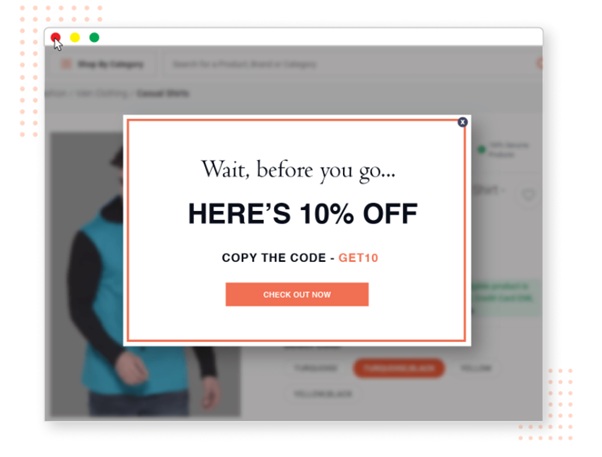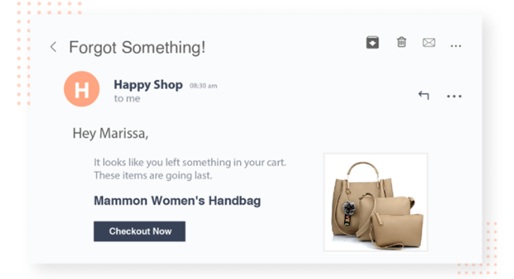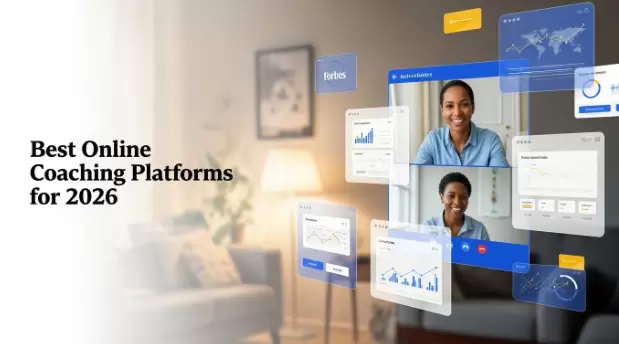Envision that shopping in a physical store is the same as shopping in an eCommerce store.
You step into a supermarket, pick products from the rack and fill out your shopping basket.
The same scenario can also be witnessed in the kingdom of online business. Regardless of your best-laid offers, clients visit your site, begin shopping, and then close the tab and never come back. It's because they will be busy watching the trailer of their much-awaited star’s movie.
This is Shopping Cart Abandonment and quite possibly the most significant issue for an online business in terms of its survival. In simple terms, Shopping Cart Abandonment occurs when customers who add an item to their cart leave before placing the order.
Tragically, it's likewise difficult to escape abandonment altogether. But it is certainly not difficult to work on your eCommerce business experience to diminish abandonment.
In this post, let us check out the techniques for doing that precisely.
To start with, however, we should take a look at the base of abandonment.
Reasons for eCommerce Cart Abandonment
With a huge number of consumers shopping each day, their purpose behind leaving the site without purchasing is not explicit. There could be different circumstances causing a few to finish the checkout cycle.
Let us get started with the primary reasons for Shopping Cart Abandonment.
Sudden Shipping Cost:
Higher or a surprising delivery cost is one of the essential reasons for it. Mostly it happens when the delivery cost surpasses the item cost.
Assuming you don't reveal the delivery cost at first and the total cost goes beyond their spending plan, consumers will probably leave.
Sign-Up To Create a New Account:
Most of the users try not to create another account. It is because of the time involved to fill up the form or the fear of getting promotional messages.
Individuals really like to exit more than shopping when they observe that they need to make another account.
Investigating for Later Buys:
Users generally research before purchasing their craving item. Along that process, they go through a lot of online stores.
They add items to the cart they think of purchasing later. A few clients utilize the trucks to think about things before buying. It is one of the numerous well-known reasons behind Cart Abandonment.
Security Concerns:
eCommerce shopping consistently raises a massive worry for its security. The user needs a definite guarantee for the security of their delicate data imparted to the site.
For more profitable sales, the site should invest in building trust. Assuming that you fall short, the client will leave your site without purchasing.
A Long Check-out Process:
Nobody likes to go through a tedious check-out process. Not-so user-friendly guidelines or a pile of pages between the cycles can be really overwhelming for the clients.
No Multiple Payment Options:
Numerous clients are open to using a specific payment option. The inaccessibility of their preferred choice can steer them to leave the site.
Best Ways to Narrow Down Shopping Cart Abandonment
How aching it would be to witness an enormous number of users on the checkout page but abandoning the carts without placing any order.
This is not the end of the world. It happens with many e-retailers just like you.
There are numerous techniques you can use in an eCommerce store that will shrink the abandonment rate gradually.
Show Signs of Security for Trust Building among Customers:
Some e-retailers see payment forms as a simple and mandatory custom in the business cycle. They have a feeling that they have enticed you with their products, so is there any good reason why you wouldn't finish up a lengthy form without a doubt? This is undoubtedly not the situation. Moreover, your lengthy payment forms are an essential tool in building trust in your site.
By requesting that your clients finish up a payment form, you're basically requesting them to entrust you with their private data. This goes a long way past their contact information. You are requesting their credit or debit card details, something many individuals are reluctant to leave behind.
To counterbalance the reluctance of providing their private data, use your payment forms as a chance to build trust. Incorporate trust cues. For example, security logos in an evident position near your payment forms can also do wonders.
Put up a Progress Bar in the Checkout:

Imagine you're waiting in the queue at a physical store. The person at the bill counter asks you for your postal code, or your contact number, or your loyalty card details. Regardless of whether you have a loyalty card or not, you wish to save by opening one.
These disturbances drag out the Checkout process and should be eliminated in the online store.
Perhaps the ideal way to do that is by showing a Progress Bar for your Checkout pages.
By showing clients where they are in the Checkout cycle, you're taking out the potential concern that purchasing something from you will take additional time.
It guarantees guests that they will be done soon, and they can return soon to Check out their favorite movie online or whatever they would prefer to be doing. It additionally kills uncertainty and makes the Checkout cycle clear for clients to comprehend.
Have Multiple Payment Choices:
When planning your online business Checkout pages, remember to deliver a wonderful, fulfilling, and eventually consistent shopping experience. Assume you are just adding a single payment option or not so many. Then you are putting barriers between your potential customers and your deals.
Mastercard payment choices are easy decisions. But today’s customers have more options than ever to pay for online purchases. UPI payments and mobile wallets are turning out to be more popular, especially among the younger population.
Offering many payment methods limits or disposes of another explanation why a user will abandon their cart. Also, you're giving your clients what they need, and that is what's really going on with it.
Retain Product Thumbnails Throughout the Order Cycle:
When you purchase something in a physical store, you can see whatever you're purchasing just in front of you. This may not really be the situation in an internet business experience.
The majority of users won't forget what is in their shopping cart, except if they're on a shopping marathon.
Like a Progress Bar, including thumbnail pictures of the items they have added to their cart can be another establishing and commendable strategy that confirms the user of what they're buying.
Showing thumbnails help ground the guest all through the checkout cycle and extraordinarily diminishes the danger that they will leave their cart.
The improved checkout experience is limiting friction and making it simple for clients.
Strong CTAs on the Checkout Page can bring about drastic results:
Many eCommerce websites neglect to add any call to action at their checkout page. Most of the store owners always have the notion that, if the potential customer adds products to the cart and moves to the checkout page they don't need any push to complete the order.
Checkout pages are the ideal spot for a solid, clear Call to Action (CTA) that motivates people to finish their purchase.
Keep the context consistent all through your CTAs, through to your checkout cycle. Assuming you favor pleasant and engaging language in your promotion material, keep up with this receptive tone on the checkout page as well.
While it's critical to incorporate solid CTAs on your checkout pages, it's similarly essential to guarantee that the context of these CTAs is always reliable.
Make Saving Carts Easier:
When you shop at a physical store, you either aim to purchase something or you don't. You can stay in the queue to pay for anything that's in your cart or you can leave the store with nothing. Shopping on the internet isn't as direct.
Customers hope to exploit the advantages of shopping online, including the capacity to get back to an ongoing order repeatedly. In order to further develop your conversion rates, make it easy for clients to get back to carts in progress.
Saving a Cart should be as simple as clicking a ‘single button’.
Countless possible interruptions may occur during checkout both in a physical store and online shopping. This is why it's vital to permit customers to get back to their carts to finish the checkout during a period that is convenient for them.
There are multiple ways you can assist clients with saving a shopping cart. You can ask clients to sign into their accounts or you can utilize cookies to remember customer carts without constraining them to sign in. In a perfect world, saving a cart for later finishing must be as simple as it could be expected.
Optimize for a Wonderful Experience:
Assuming your pages, explicitly the checkout pages, need a lot of time to load, then it could seriously influence your deals. The sluggish loading in a site irritates the clients and prompts them to leave the cart abandoned once and for all.
Thus, optimize your web pages and work on their quality and speed meticulously.
Some on-page specialized components are more effortlessly improved than others. For instance, your pictures should be upgraded to keep up with that significant equilibrium between quality and speed. You can likewise restrict the utilization of promotion network trackers, badly executed labels, social plugins, and other lumps to expand your page load times.
There are some other components that are farther outside your ability to control. For example, the pause between a user clicking a place order and processing their payment.
Assuming you're aware of an inescapable pause when processing payments, consider presenting a visual portrayal of the delay to guarantee clients that something is really occurring. For example, a loader or a progress bar. This tells them that things are without a doubt happening in the background and that they will be done immediately.
A large part of individuals is presently using their mobile phones to shop on the internet. This makes it highly important to have your eCommerce store mobile-friendly. If your site looks engaging on the computer, then you can ensure that it is responsive on handheld gadgets too. Neglecting to do so can bring about a higher bounce rate and Cart Abandonment rate
Retarget Abandoners:
Our best method for recovering Shopping Cart Abandonment is to realize that a few clients will inevitably leave their carts. So you can follow them with remarketing efforts later. ‘Retargeting’ is significant for internet business retailers.
‘Facebook Remarketing’ is ideally suited for focusing on shopping cart abandoners.
As Facebook promotions are visual-based, they are great for catching the optimistic characteristics of your items to attract your visitors. Remarketing with Google AdWords and Bing Ads is an extraordinary idea. You should remarket to clients who leave their shopping carts.
There are other tips that can assist with lessening shopping cart abandonment, and the prominent one is remarketing, which assists you with winning back the potential clients you will lose en route.
Get help from Exit Popups:

Get the guests when they attempt to leave your site, abandoning their trucks, using the Exit-Intent Popup. Exit popups are likely the most effective way to recover the Abandoned Carts.
What is enticing with regards to them is that they always give you a chance to convert a guest into a client right away when they are going to leave your site.
Through Exit Popups, you can also draw guests' consideration towards your offerings at the last second and urge them to utilize their purchases.
The presence of an Exit Popup when the client is attempting to leave, leaving the cart abandoned, can acquire a huge change in your Cart Abandonment Rate. Hence, it is advisable to incorporate:
- Offers
- Game contests or opportunities to win with prizes
- Free delivery offers
- Downloadable content
This last-moment attempt can support your conversions to the maximum extent possible if your offers are persuading.
Here is what you can do with Exit Popups:
Track guests' actions and trigger a popup when the guest is going to leave your site.
Toss a completely customized popup to accommodate your branding.
Display coupon code and auto-apply it when the guest clicks it.
You can also introduce an Exit-Intent Popup on any page, including the cart and checkout pages.
Think about what clients are checking out and how you can make them stay. You don't have to carry out an Exit-Intent Popup on each page of your site, yet genuinely consider adding it to:
- Product Pages
- Classification Pages
- Checkout Pages
Display Remaining Stock and Create a Sense of Urgency Intently:
Customers can be simulated by showing the leftover stock. The quantity of things left tells that the item is popular and may not be accessible later.
It makes a need to keep moving and urges clients to solidify their purchasing choice. They will move quickly and will wind up buying the item.
Another strategy that creates a sense of urgency and lessens Cart Abandonment is ‘Countdown Clocks’. Static Countdown Clocks are extraordinary when your deal has a selected end date. Dynamic Countdown Clocks give each of your guests a similar measure of time to exploit your unique offer.

That implies the clock begins when the client first sees the mission rather than starting on a particular date.
This permits you to decently make desperation for your site's guests in general and persuade reluctant purchasers to go through the whole checkout process.
Send Abandoned Cart Emails:

Assuming a client has created a new account on your online store, you can likely contact them through email.
Use automated emails services to send Cart Recovery messages to clients who left their buys incomplete. This is another way to showcase your products and remind clients about the item they left behind.
A friendly lump will not cause any damage. It will simply make your Abandoned Cart email stand apart by:
- Having an appealing title
- Featuring one explicit (well known) item
- Composing inventive copy is a decent opportunity to show your brand's worth.
- Provide an offer. However, be cautious with this, as the clients may generally expect an offer email after every Abandoned Cart.
- Cart Recovery messages is a decent method if you have a rewards program. Send Cart Recovery Messages to remind clients of the reward points they have got to spend on them.
Avoid Pricing shock at the Payment Page:
Individuals generally don't anticipate that the cart value should surpass extremely high on the installment page. Be that as it may, in some cases, the extra charges like transportation cost, conveyance charges, taxes, and hidden charges make a tremendous distinction between the item worth and the cart value.
Try to stay away from this.
Be straightforward about the general expenses. Show it forthright at the hour of adding to the cart. So, you don't amaze your clients later and are providing them with an unmistakable thought of the total cost.
Or, on the other hand, you can just offer free delivery. This is probably the most effective way to diminish Shopping Cart Abandonment. To change the delivery cost, you can marginally expand the item cost.
Flexible Return Policy:
Most of the time, customers leave their cart as they are not happy with the business' Return Policy. There is a craving to buy, and however, because of an unsuitable return policy, customers choose not to go the extra mile of buying.
Have a decent and clear Return Policy. Give them adequate days to return the item, assuming it has got a few flaws. Clients will be more certain while making a purchase.
Online customers can't actually feel the items, and nobody likes to purchase something that doesn't appear good in person.
Assuming you don't offer free returns yet, have a trial to sort out whether it's something you need to do. This is the way you can start:
- For 15 days, offer free returns for all the items. Once the preliminary is finished, look at the number of deals created in that return period with the deals produced before it.
- Then deduct the expense of returns from an extended amount of deals to decide whether a flexible return policy works for your primary concern.
Keep Guest Checkouts and Social Logins:
Pushing clients to create an account at the Checkout page is one of the significant explanations behind Cart Abandonment. Why create the obstacle in the middle of an effective checkout?
Think from the shoes of the customer. Do you like to be compelled to invest extra time filling data before Checkout? While it delays the Checkout cycle, it is likewise irritating for the client.
Subsequently, it isn't wise to constrain clients to make an account, particularly when they have numerous choices out there.
It is understood that you need to obtain the client's information. However, requesting it by breaking the Checkout stream isn't the best way.
So how would it be a good idea for you to do?
Offer a Guest Checkout and Social Login. By having these two choices on your Checkout page, you will diminish the cart abandonment rate. Ultimately, it also paves the way to improve the client experience.
Allow clients to look at it as a visitor if they are not happy joining. Social login, then again, supports fast signup.
Last Words:
Reducing Shopping Cart Abandonment is one of the speediest and most straightforward ways of getting additional worth from your site.
You don't have to execute all of the above strategies. Just implementing only a couple of things will assist you with moving the right way.
It merits A/B testing the Cart Recovery techniques before settling on any firm choices. What works well for one online store may not really work for yours.
So make certain to put together any choices you make concerning real information based on your customer's behavior.


 Table of Content
Table of Content










